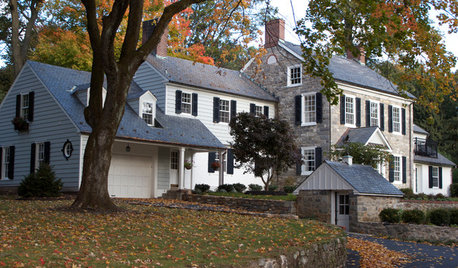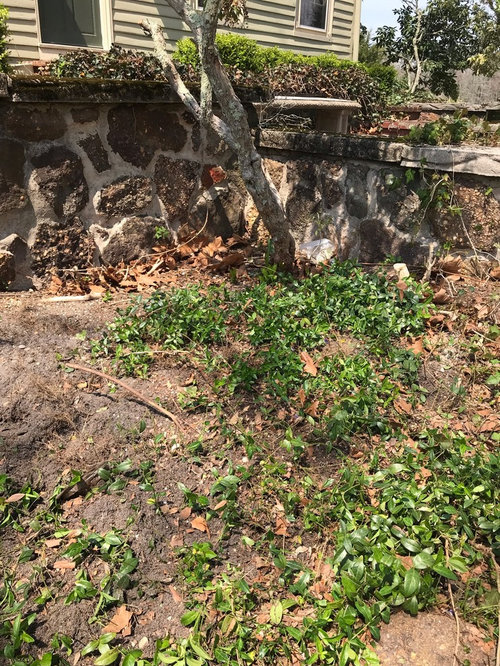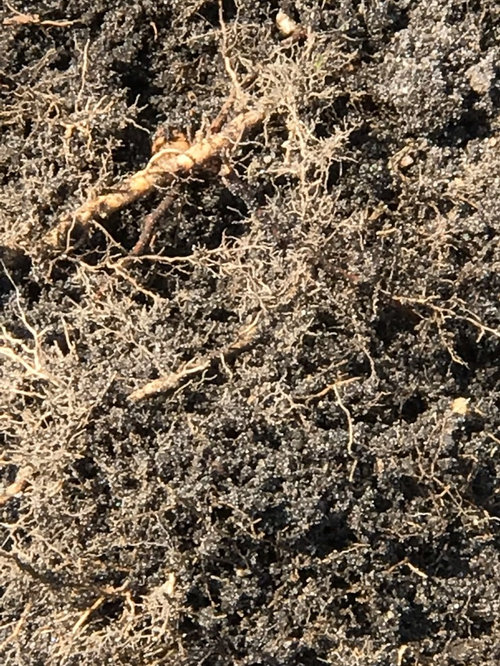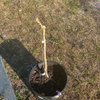Help! What is this and how do I get rid of it and it’s roots?
Emily C
5 years ago
Featured Answer
Sort by:Oldest
Comments (21)
ashgreenpa7a
5 years agoRelated Discussions
HELP how do i get rid of white flies on potted plants
Comments (13)Dyna-Gro packages cold-pressed neem oil. In a 1 quart spritzer bottle, mix: 1 pint very hot water 1 teaspoon neem oil (cold-pressed or virgin oil only - Dyna-Gro packages a very good product) 4 drops Murphy's oil soap (or dishsoap) Shake well and add 1 pint of 70% isopropyl (rubbing) alcohol. Spritz Shake frequently while spritzing. Be sure to cover the entire plant. Don't spray in full sun. A little more Murphy's is ok, but unnecessary if using the isopropyl. Repeat at 1-2 week intervals as needed. Copy paste to your browser: http://homeharvest.com/insectspraysneembased.htm Al...See MoreNeed help: What is this weed and how do I get rid of it?
Comments (3)It's some sort of grass. The exact type doesn't really matter. The Bermuda looks completely dormant in that picture. If so, the easiest way to kill the weeds would be to use glyphosate (brand name roundup). Glyphosate will only work on plants that are green. It's a nonselective weed killer, so it will kill anything green that it ends up on, but if the Bermuda is dormant, it won't take the glyphosate in and kill it....See MoreWhat is this & how do I get rid of it?
Comments (5)Perhaps you have alcohol on hand. In your medicine cabinet, the same alcohol you'd use on a cut will kill those insects NOW. Use a cotton swab to get into tiny crevaces. To clean the leaves & stems you can dip either a piece of paper towel or an old toothbrush into the alcohol. They will die right before your eyes. You must check the undersides of the leaves too. There have been many posts lately on what to use to take care of scale and mealie bugs. You might want to do a search and read them. Since your plant is so infested you'll want to spray it well with the product of your choice and do it again in a few days to get the newly hatched. Watch the plant carefully, you may have to treat it several times at regular intervals. This may seem daunting, but once you've restored your plant you'll be happy to see it thriving again and there will be more flowers. Good luck. Sheila :)...See MoreWhat is this backsplash and how do I get rid of it?
Comments (2)Looks like FRP panel that was cut down, and depends on how the did it, some roll glue over the entire surface, and glue it up, maybe you get lucky and they used a few dabs of caulk and it will come right off with a scraper. Most likely you will have minimal wall damage, just apply a few skim coats of spackle over it and get it ready for paint or whatever you plan on doing there. Good luck...See MoreEmily C
5 years agowindberry zone5a BCCanada
5 years agoYardvaark
5 years agolast modified: 5 years agoEmbothrium
5 years agoVaporvac Z6-OhioRiverValley
5 years agoYardvaark
5 years agofloral_uk z.8/9 SW UK
5 years agoYardvaark
5 years agogardengal48 (PNW Z8/9)
5 years agoEmily C
5 years agoYardvaark
5 years agolast modified: 5 years agogardengal48 (PNW Z8/9)
5 years agoSherry8aNorthAL
5 years agoSherry8aNorthAL
5 years agofloral_uk z.8/9 SW UK
5 years agoYardvaark
5 years agogardengal48 (PNW Z8/9)
5 years agoEmily C
5 years agoSherry8aNorthAL
5 years ago
Related Stories

GARDENING GUIDESGet a Head Start on Planning Your Garden Even if It’s Snowing
Reviewing what you grew last year now will pay off when it’s time to head outside
Full Story
HOUSEKEEPINGIt’s Time to Clean Your Gutters — Here’s How
Follow these steps to care for your gutters so they can continue to protect your house
Full Story
DECLUTTERINGDownsizing Help: How to Get Rid of Your Extra Stuff
Sell, consign, donate? We walk you through the options so you can sail through scaling down
Full Story
LIFEYou Said It: ‘It’s Different ... But Then, Aren’t You?’ and More Wisdom
Highlights from the week include celebrating individuality and cutting ourselves some decorating slack
Full Story
LIFEYou Said It: ‘It’s Important to Wait’ and More Houzz Quotables
Design advice, inspiration and observations that struck a chord this week
Full Story
ARCHITECTURERoots of Style: Where Did Your House Get Its Look?
Explore the role of architectural fashions in current designs through 5 home styles that bridge past and present
Full Story
DECORATING GUIDESLose It: How to Get Rid of Old Light Bulbs
When the light goes out, you'll want to get rid of the bulb safely. Here's how
Full Story
DECORATING GUIDESLose It: How to Get Rid of a Mattress
Updating your bedroom? Here's how to donate, reuse or recycle that mattress — and keep it out of the landfill
Full Story
DECORATING GUIDESLose It: 4 Ways to Get Rid of Your Old Carpet
Try one of these earth-friendly tips before stuffing your dingy carpet or rug in the trash
Full Story
DECORATING GUIDESUse It or Lose It: How to Get Rid of Old Keys
Clean out your junk drawer by getting rid of keys in an earth-friendly way
Full Story









gardengal48 (PNW Z8/9)